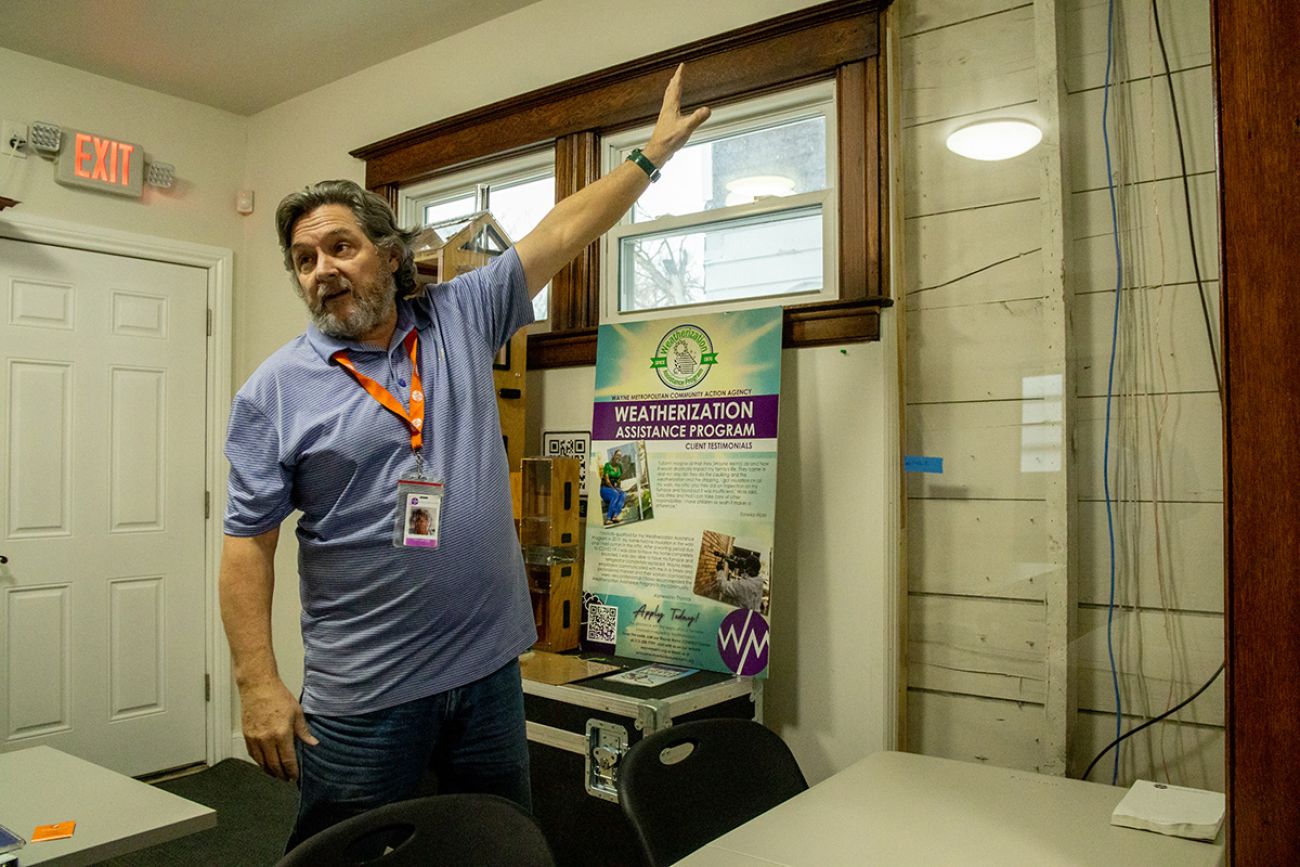Michigan wants to insulate 15,000 homes but needs hundreds of contractors

- Flush with federal cash, Michigan will soon launch a $211 million effort to drive down home energy use by upgrading insulation and installing energy-efficient appliances
- But finding contractors has proven difficult. Dozens say they’re interested, but Michigan needs hundreds
- The state is recruiting workers with training, bonuses, and appeals to their conscience
Flush with federal cash to slash greenhouse gas emissions from the housing sector, Michigan environmental officials plan to buy new insulation, windows and other energy upgrades for 15,000 homes in the next few years.
But first, they need to recruit and train hundreds of contractors to do the work — a task that has long proven difficult for Michigan’s state-run home weatherization programs.
“The workforce just isn’t there,” said Julie Staveland, an assistant division director at the Michigan Department of Environment, Great Lakes and Energy.
So the state is tapping local nonprofits to recruit workers, footing the bill for training and even offering bonuses worth hundreds of dollars per project to contractors willing to work in economically disadvantaged communities.
Staveland’s message to contractors on the fence about enlisting: “This is an opportunity to grow their business and make an improvement in the homes within their communities.”
Related:
- Michigan plans big spending to insulate homes. But can it find contractors?
- What furor over drab Gaylord land says about Michigan’s energy transition
- Ann Arbor hopes to bring rooftop solar to the masses by creating a utility
Money for the effort comes from the Inflation Reduction Act, a landmark federal climate spending law passed during the Biden administration that earmarked $8.8 billion nationally for home energy rebates to help people pay for insulation, heat pumps and other purchases that shrink homes’ energy footprints.
Michigan’s cut is $211 million, and state officials plan to spend it on households that make less than 150% of area median income — with more money available for those making 80% or less of area median income.
Although President Donald Trump vowed on the campaign trail to revoke unspent IRA funds, state officials believe Michigan’s home energy rebate money is secure because grant agreements have already been signed.
Home energy use accounts for 20% of the nation’s greenhouse gas emissions — making boosting efficiency a major climate objective. That’s particularly true in Michigan, which has lots of old, drafty houses.
Beyond slowing climate change, better insulation and more efficient furnaces could be a financial lifeline for lower-income Michiganders, who often spend big chunks of their paycheck heating drafty homes that they can’t afford to renovate.
“When you have a home that’s energy-efficient, not only is it increased comfort in the home… it’s often improved health,” Staveland said. “That's money that they can then put back into other things, whether it's their food budget or paying off debt.”
70 down, 330 to go
After launching a pilot program involving 50 homes in Marquette County and Holland last year, state officials plan to expand the program statewide by March and upgrade 15,000 homes over the next five years.
But so far, just 70 contractors have expressed an interest — far short of the 400 Staveland estimates Michigan needs, at a minimum, to spend the federal money before a 2031 deadline.
“Part of it is just a numbers game,” Staveland said: Because money for energy efficiency work has historically been scarce, Michigan doesn’t have a big stable of trained contractors.
Michigan is also competing for workers against the private sector, where contractors can find easier, more lucrative work building or remodeling newer houses.
The need to find and train more workers “is great,” said Brian McGrain, executive director of Michigan Community Action, the statewide association of local community action agencies that help enroll residents in home weatherization assistance programs.
Because of the worker shortage, McGrain said, “we have waitlists at all of our agencies.”
In addition to offering financial incentives and training, the state hopes to compete with the private sector by putting together bigger, more lucrative projects. For example, the federal weatherization dollars could be paired with other funding sources to repair a resident’s roof and install solar panels at the same time.
Contractors interested in participating can learn more here. Residents can find out whether they qualify for assistance here.
Michigan Environment Watch
Michigan Environment Watch examines how public policy, industry, and other factors interact with the state’s trove of natural resources.
- See full coverage
- Subscribe
- Share tips and questions with Bridge environment reporter Kelly House
Michigan Environment Watch is made possible by generous financial support from:
Our generous Environment Watch underwriters encourage Bridge Michigan readers to also support civic journalism by becoming Bridge members. Please consider joining today.
See what new members are saying about why they donated to Bridge Michigan:
- “In order for this information to be accurate and unbiased it must be underwritten by its readers, not by special interests.” - Larry S.
- “Not many other media sources report on the topics Bridge does.” - Susan B.
- “Your journalism is outstanding and rare these days.” - Mark S.
If you want to ensure the future of nonpartisan, nonprofit Michigan journalism, please become a member today. You, too, will be asked why you donated and maybe we'll feature your quote next time!






